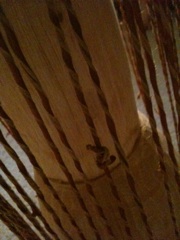1959 was a year for jazz that’s easy to remember. The albums that came out are among the best produced in the history of recorded music. Kind Of Blue by Miles Davis. Time Out by Dave Brubeck. Coltrane’s Giant Steps and Mingus Ah Um (by Charles Mingus). And the one that made the least sense to me when I first heard it, The Shape of Jazz to Come by Ornette Coleman.
The first time I came across The Shape of Jazz to Come was in college when it was loaned to me by a buddy of mine. This guy was a little too hip for his own good, but being the pretentious young composer I was, I took it from him and tried to choke it down. This is not the kind of music that one listens to while doing something else. Music like this requires a monastic stillness of mind and complete focus of the type I didn’t know existed then. As a result, I returned it graciously and went about my business.
It was years later when I was living in New York City that it made sense. Working four jobs and going to school full time doesn’t make for much of a social life. Most of my days and nights blurred together and were lived within the confines of my head. My days ran around the clock and sleeping wasn’t something that I did as often as I should have, so some of my walks between various jobs and school (I didn’t have enough money for public transportation) were made while only half awake. One of the benefits of this was the mental idle time that allowed me to think through things without being interrrupted. It was the kind of sleep walking that you can only do on that island.

In that half-sleep I could hear the sound of the crowd. Traffic. Pedestrians. Horns. Sirens. Truck brakes discharging. Metal trashcans. Music blaring from apartment windows. Doors slamming. The omnipresent footsteps. The sounds buzzed and slowly blurred into one another. There was no rhythm or harmony, but the sound moved forward. There was a destination that was always just over the horizon and never closer.
On a rainy day, the sound of my boots on the pavement added a pulse to this unstoppable wave of sound. To my mind then it felt like adding a backbeat to Stockhausen. That made me think of Coleman. New York City is its own free jazz. I have lived in other cities since but have never managed to recapture that sound. On my way into work this morning, it dawned on me that this was the thinking behind the collection of pieces I’m working on right now.
Each of the tracks is very ambient and contains what sounds like background noise. Part of that stems from a happy accident I had while reviewing some recordings at the cafe a couple of weeks ago. I had an enabled track in Logic and while I thought I was listening, I was actually recording. What came from that was a highly effected recording of the cafe noise around me blurred behind two dueling guitars. Magic like that needs to be captured.
And now I’m adding the pulse. The final product will likely be tracks that will fail miserably in a car or on a home stereo. The only way to hear them, really hear them, will be through headphones (aka the audiophile’s bane). Today I’m embracing that limitation and taking it to its logical conclusion, whatever that may be.
I guess part of me is still back on that street with the percussive puddles under my feet and the sound of a million lives going on around my head.